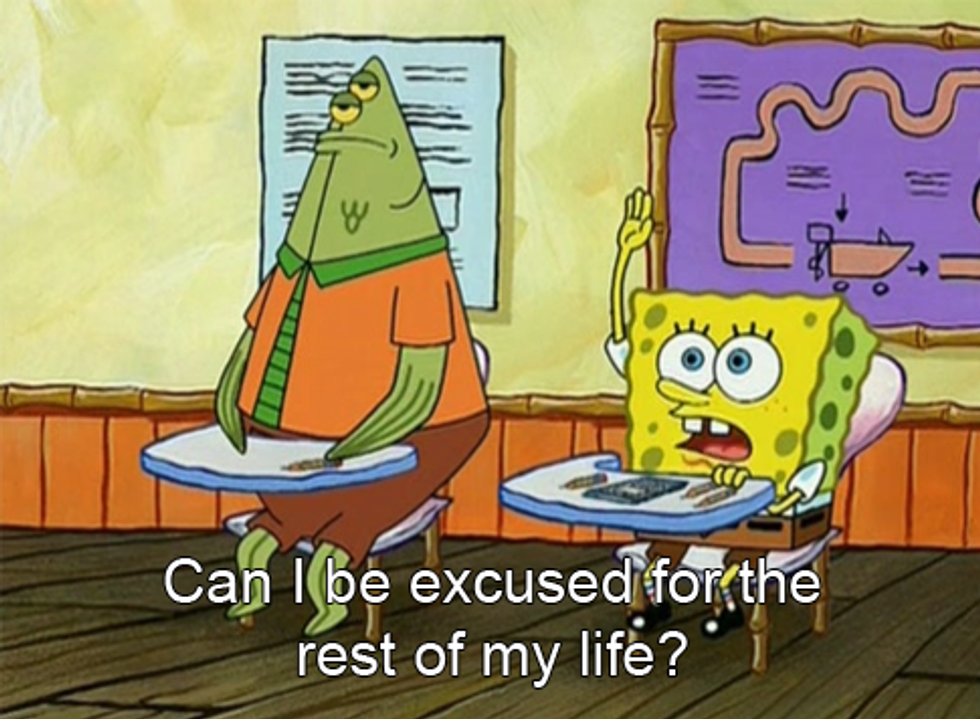In my article "Florida=Everglades...Right?" I took you through a (sort of) virtual tour of all the different environments that Florida has to offer besides the infamous swamp scene that many people associate with the Everglades. This article is going to piggy-back off of the first to further broaden your knowledge on Florida's wonders. However, this time, I will be giving you the scoop on many of the animals and plants that are found in all of the different upland habitats that make up the beautiful Sunshine State.
Flora
The first of the upland habitats is the pine flat woods and they are (you guessed it) mostly dominated by slash pine trees and longleaf pine trees. One characteristic that these pine habitats share is their need for disturbance by fire. Pine forests in upland Florida have adaptations to deal well with fire. They have serotinous cones, which only release their seeds under the intense heat of a fire, and the pines shed their needs to create a blanket of litter on the forest floor to create fuel for the fires.
Sand Pine
Slash Pine
Long Leaf Pine
Scrub habitats are concentrated more in central and northern Florida. They are the result of ancient dune systems and are home to a variety of endemic species. The most notable of the scrub communities is sand pine scrub, oak scrub, rosemary scrub, and coastal scrub. Scrub habitats also desire disturbance by fire. Fire in many of these communities keeps competitors out because they are not well adapted to deal with the fires that go through the communities. When fires are not allowed to burn as they usually would then invasive competitors out compete the native species and take over the habitat.
Notably, although considered an upland habitat, coastal scrub habitats are also equipped to deal with some of the conditions that coastal habitats also encounter. They are a transitional zone between beach dune and maritime forests, and unlike the majority of their counterparts their greatest disturbance is not fire. Their flora are more adapted to deal with salt spray and storm surge as a result.
Scrub Hickory
Florida Rosemary
The third kind of habitat is dry prairie. While wet prairies can be found distributed in the wetland habitats of Florida, dry prairies are part of the upland communities. They are distributed among the Kissimmee river and contain an abundance of herbaceous vegetation. Some species found are prairie grasses such as broomsedge bluestem, arrow feather, and switch grass. Some shrubs such as shiny blueberry; herbs, and mushrooms.
Broomsedge Bluestem
Switchgrass
The fourth kind of habitat is hard wood hammocks. While different hardwood communities can be found all over the state, what is traditionally known as tropical hardwood hammocks are found in the extreme southern portion of Florida. They are sometimes known as wild orchards due to the high frequency of fruit bearing species that are found there. Hardwood habitats are some of the most damaged habitats in Florida. They are greatly affected by storms and human development.
Pigeon Plum
A great deal of upland habitat is created by humans. When these natural habitats are destroyed the land is converted to suit other human purposes. The majority of the time upland habitats become involved in the agriculture business. Much of the land is used for sugar can farming and other big cash crops that grow well in Florida. Some of the land has been historically used for rangeland, although that has become less common in Florida. With increased urban sprawl, golf courses are a big contributor to disturbance of upland habitats.
Florida’s Rangeland
Fauna
Upland habitats are extremely threatened in the state, and great care should be given to protect them. Their natural processes are undesirable to humans, but are essential for the survival of the habitats that have been described. Many of these habitats are also homes for a wide variety of species many of which cannot survive outside their designated habitats!
The pine flatwoods are home to many different organisms. Some mammals that live in this area are Sherman’s fox squirrel, white-tailed deer, raccoons, Florida mouse (a species of special concern), bobcat, Florida panther (endangered), and Florida black bear (threatened). Many birds live in pine flatwoods: red-shouldered hawk, pine warbler, red-cockaded woodpecker (endangered), Southeastern American kestrel (threatened), and red-bellied woodpecker. The reptiles that live in this habitat include the Eastern indigo snake (endangered), pine woods snake, Eastern diamondback rattlesnake, and dusky pygmy rattlesnake. There are also some amphibians, which include the pine woods treefrog, ornate chorus frog, southern chorus frog, and oak toad.
Red-bellied Woodpecker
Another upland habitat that houses many organisms is the scrub habitat. The Florida mouse (a species of special concern) and Goff’s pocket gopher are some of the mammals found in this area. Some birds are the Eastern towhee, Florida scrub jay (threatened), common yellowthroat warbler, and great-crested flywatcher. There are many reptiles that. There are many reptiles that live in this habitat. These include the scrub lizard, southern black racer, and the gopher tortoise, which is an important organism because its burrows provides shelter for many different organisms, such as the gopher frog.
The last major habitat included in uplands is the hardwood forests. The golden mouse, marsh rabbit, Sherman’s fox squirrel, white-tailed deer, raccoons, and Florida black bear (threatened) are some of the mammals. There are also many birds in this area. Some are the great horned owl, red-shouldered hawk, short-tailed hawk, wood thrush, brown-headed nuthatch, and pileated woodpecker. The amphibians in this habitat include the southeastern slimy salamander and eastern spadefoot toad. Finally, the reptiles that live in the hardwood forests include the eastern indigo snake, eastern hog-nose snake, and Florida box turtle.
The upland habitats are also home to many exotic species. Some of these include feral/domestic cats, house mouse, house finch, European starling, Cuban anole, and cane toad. While some of the exotic species do little harm, others are creating problems for the native species. They can eat them, or outcompete them for space, or even transmit diseases to them.
As you can see, Florida can be known for its cute-and-cuddlies and beautiful plants as well as its beautiful white sands and sunny beaches.








































